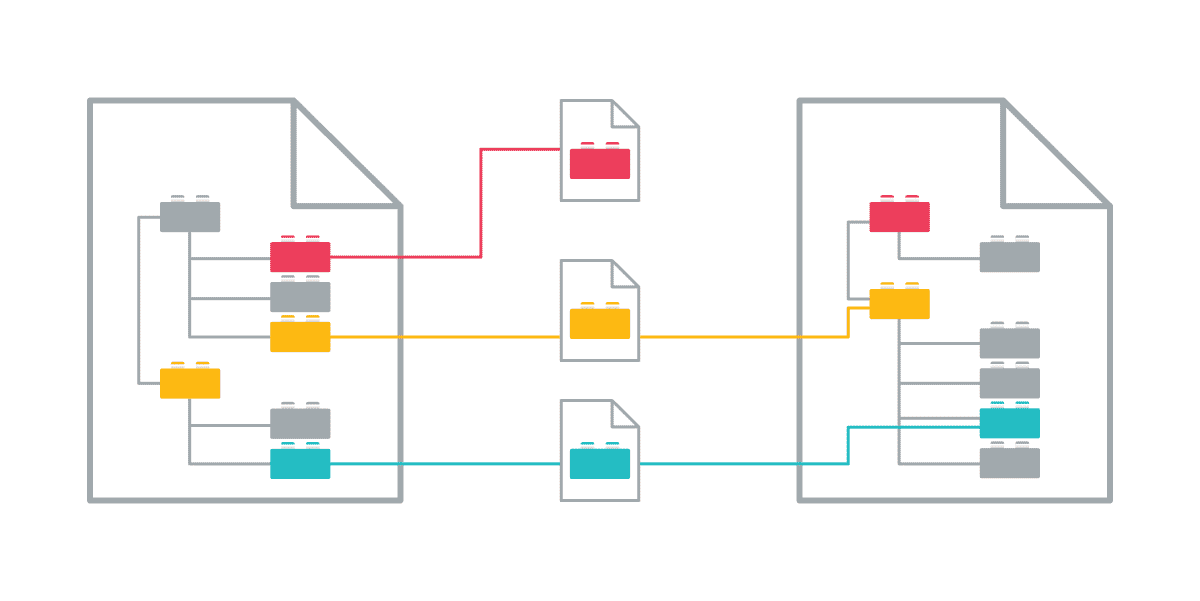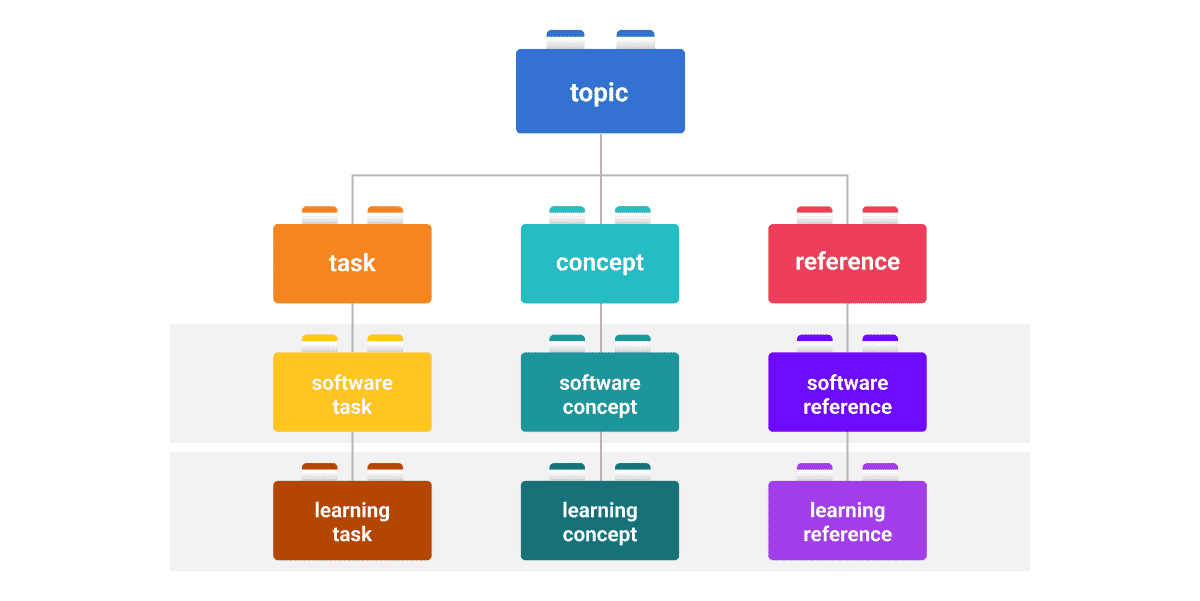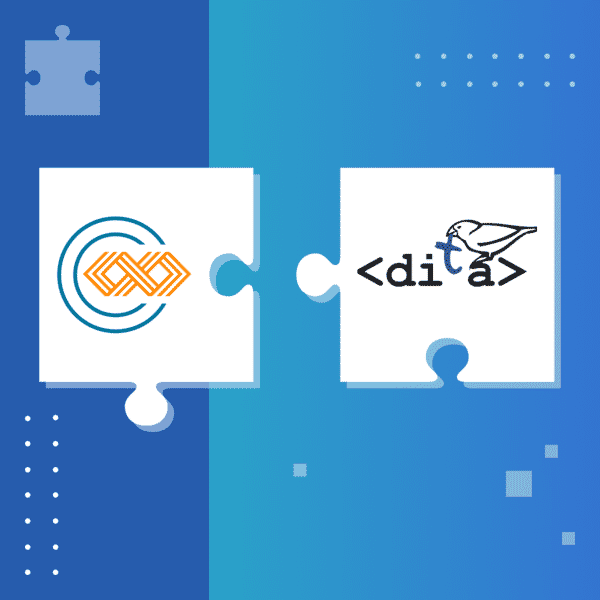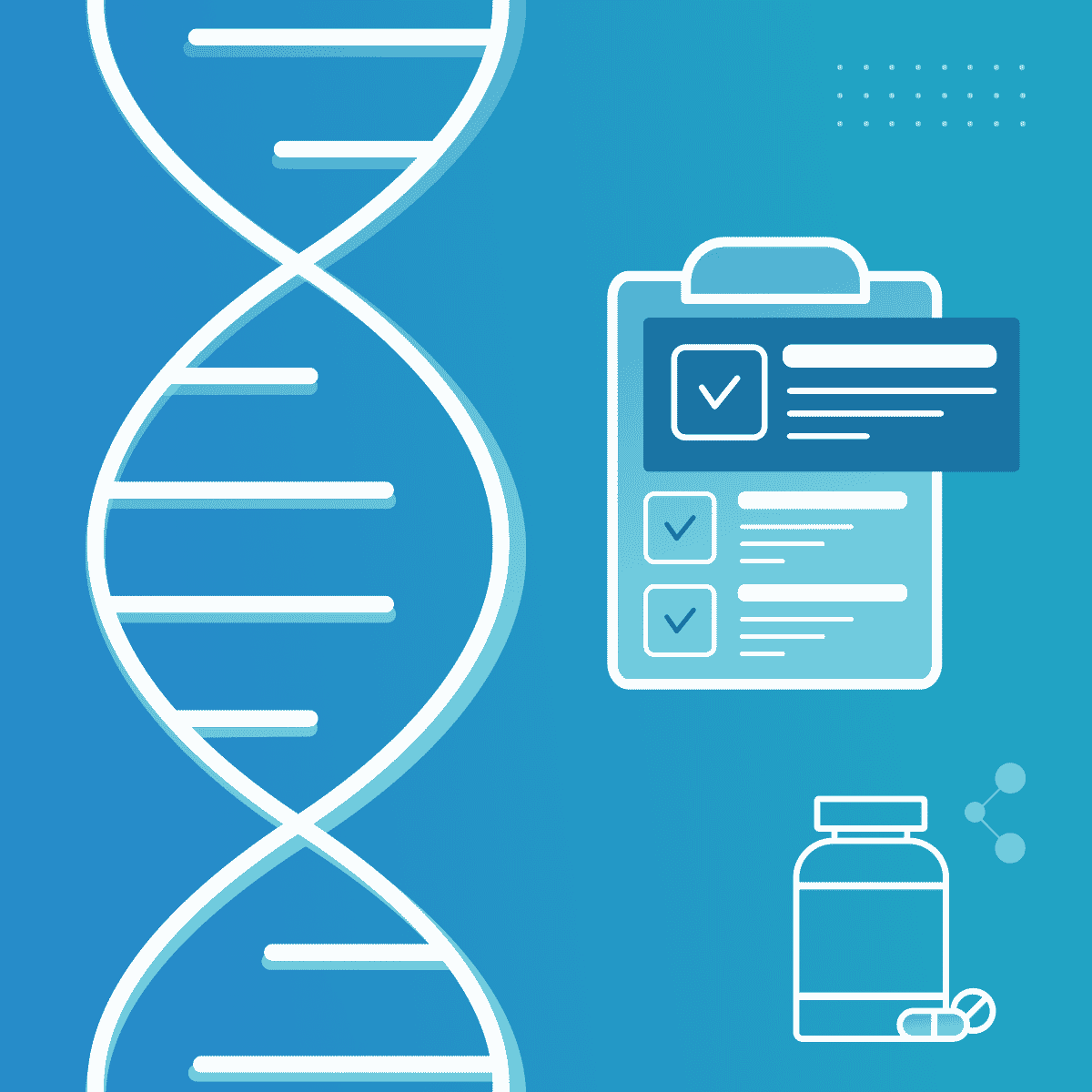Over the last couple of decades, a question often echoes: What is the optimal format for creating Technical Content, including user, operator, and service manuals, and learning content? Is it Markdown? Is it DocBook? Or is it something more structured and robust?
As professionals in technical communications, we must deal with these issues with a level of knowledge and understanding. For those weary of wandering in the desert of custom implementations and the opaqueness of a non-standard approach, there stands a beacon of efficiency, scalability, and reuse. The Darwin Information Typing Architecture (DITA).
You might not like what you are about to read and while some of the opinions stated are subjective, a lot of what is shared below is objective and based on decades of experience in the field of structured authoring.
Embracing DITA is not just a choice—it is a strategic imperative.
DITA is the best way for businesses that require a structured authoring approach to technical writing to publish smart and captivating technical content.
Embracing the principles of DITA is akin to engaging with the foundational theories of Darwin, the father of evolutionary thought. “Why invoke Darwin's name in this context, you might ask?"
It is all about extensibility. This powerful concept is built into the standard, not just a particular tool. Businesses seeking scale must recognize that DITA is infinitely scalable, and REUSE stands as its monumental advantage. The largest active DocBook implementation? You will find that bound to one company, and evolving beyond them? Good luck.
A failure to establish clear rules for reuse could leave you tangled in what some term “spaghetti code”. DITA provides these clear rules, and as such, no matter the complexity of your product matrix, the relationships between content remain relatively simple and clear.
Michael Priestly once pointed to specialization as the core of DITA; it is that flexibility that allows you to extend and adapt without losing sight of the original objectives. It is the Darwin thing—the ability to evolve.
So why DITA vs other structured authoring flavors such as DocBook for example?
Firstly, DocBook is a dinosaur and in fact pre-dates DITA. DITA was created as a future-proof pathway that is good for business and makes sense in a world where the bottom line matters.
Every DocBook implementation is custom. If you have the money to spend, go for it, as you will have to pay for each customization individually or wait for the vendor to find time to implement it.
Very few vendors still base their systems on DocBook. They created a specialization of the original standard; you therefore only have access to it if you are in that system. If you decide to switch course down the road, you are severely limited and going to pay for that decision eventually.
If a global community of users is important to you, DITA is also your clear choice.
Global DITA Community: A Melting Pot of Innovations
Because DITA is a standard, there is a vibrant community that has grown around it. Vendors build their tools to support the standard as opposed to the other way round. Specializations can be made by the organization without having to wait for a vendor to implement a “hotfix” meaning that the standard can be extended per industry, product type, personality, you name it.
The heart and soul of DITA's success lies in its robust and passionate community. This network of users, developers, and experts is a wellspring of inspiration and innovation that propels the DITA standard forward. This collective force drives the DITA standard, ensuring it keeps up with the shifting sands of the content management landscape. Starting with the OASIS DITA Technical Committee help is always at hand:
- Conferences and international events: such as the ConVEx North America and DITA Europe conferences, or LavaCon for content strategy allow for networking, learning from industry experts, and sharing DITA experiences.
- Online Forums: Platforms like the DITA Users Group and the DITA Awareness Group on LinkedIn offer 24/7 peer support, problem-solving, and discussions on new DITA trends.
- Social Media: Platforms like Twitter help connect DITA users worldwide, offering updates, tips, and resources. You can follow hashtags like #DITA and #techcomm, or IXIA CCMS on YouTube.
- Webinars and Training: These online learning opportunities provide deep dives into various DITA topics, catering to both beginners and advanced users. Learning DITA is a good place to start.
- Blogs and Podcasts: DITA experts share insights, experiences, and advice through blog posts and podcast episodes, offering both informative and inspirational content.
In contrast, DocBook does not have such a community of common users. The variability of schemas once an organization has started modifying the DocBook DTD (Document Type Definition) means that each set up is unique and has nothing in common for the user base to share .
Semantics in DITA: The Bridge between Human and AI Understanding
Another strength of DITA versus DocBook is its semantic capabilities. The prominence of AI and machine learning today necessitates clarity in content like never before. The predictability and clarity of DITA content enhances the performance of AI models, allowing them to generate accurate, contextually relevant responses and create engaging interactions.
The semantics embedded in DITA content not only makes it easily understood and interpreted by humans but also by machines. It's like teaching your AI new words in a language they understand better, enabling more accurate, contextually appropriate responses.
Machine Learning and AI models thrive on clear, structured data. The richer the semantics, the easier it is for these models to learn, understand, and predict outcomes accurately. DITA, with its clear semantic structures and predictability, presents an excellent framework for training these models.
Your DITA-based content is not just content; it's well-structured data that AI can leverage. The inherent semantics in DITA content helps machines more accurately understand the context, the relationship between different content elements, and the overall message.
Adopting DITA means you're effectively preparing training materials for your chatbots and generative AI models. The semantics embedded in DITA content enhance the performance of these models, allowing them to generate accurate, contextually relevant responses and create engaging interactions with your audience.
With DITA's predictable, semantically rich structure, content isn't just easy for us humans to grasp but also for AI models to interpret and learn from.
Regulatory Compliance
With DITA's strong typing, specialization, and omni-channel creation and publishing mechanisms, enterprises can create custom document models that enforce specific content standards and best practices. DITA can be integrated with existing systems, supporting translation, and ensuring consistent quality across submissions. Its scalability and customization options enable smooth alignment with unique regulatory standards, allowing organizations to play the long game in maintaining compliance with evolving global regulations.

DITA Specializations: A Clear Advantage over DocBook
One of the significant drawbacks of using DocBook is the lack of potential to create a custom version without departing from the original standard.
When organizations decide to customize the structure of the DocBook DTD (Document Type Definition) to meet their specific needs, they must alter the public identifier used for the DTD and any modules they change. However, despite the freedom granted by the DocBook license to modify the DTD, any alterations made can no longer be labeled as "DocBook."
This restriction poses a considerable problem for organizations as it leads to a departure from the standard DocBook DTD, creating a customized version. This customization, while meeting the organization's immediate requirements, can lock them into using a particular vendor's software due to the modified XML structure.
DITA's structure is based on an open standard, allowing organizations to tailor it to their unique requirements without compromising the integrity of the DITA DTD. Organizations can confidently make customizations to the DTD without deviating from the DITA standard, thus maintaining XML purity.
This inherent advantage of DITA saves organizations from the pain of a horrid and expensive XML cleanup if they ever wish to change tools in the future.
Companies can confidently adapt their content management strategies, migrate to different tools, or integrate with various systems without having to deal with proprietary-based XML code and its potential complications.

True Modularity with DITA
Modularity, or "topic-based authoring," is a forte of DITA. While DocBook claims to support it, its implementation is elementary at best. DITA offers a pristine model, conducive for technical tools to overlay their unique functionalities without interference.
The true genius of DITA is in the ability to break down complex content into manageable, reusable topics, at a much higher level of granularity than you can with a print-based standard like DocBook.
DocBook's Shortcomings
Contrastingly, the DocBook approach to modularity is lackluster. DocBook's architecture does not readily lend itself to seamless integration with external tools and systems. Its rigidity can inhibit the overlay of unique functionalities and may result in interference that disrupts the fluidity of content creation and management. The limitations translate to increased development time, potential errors, and an unsatisfactory user experience.

Link management in DITA
In managing diverse document types—such as installation manuals, admin guides, and equipment labeling across multiple products—complexity naturally arises. For example; 3 types of manuals multiplied by 4 products = 12 unique instances. Within the DITA framework, Conref has become a respected sub-topic reuse mechanism, skillfully handling shared pre-definable components.
DocBook utilizes XInclude for content referencing. While it serves a similar function, XInclude presents certain disadvantages compared to Conref. It requires more complex syntax and extensive processing, potentially leading to increased development time and a steeper learning curve for content creators.
The decision between the two may hinge on specific organizational needs, content architecture, and the products used, but understanding the characteristics and potential drawbacks of each mechanism is essential in making an informed decision that aligns with your content strategy and operational requirements.
Paying a heavy toll for simplicity
DocBook's simplicity comes at a cost. It misses out on advanced features innate to DITA, like "indirect linking". DITA's ingenious approach allows content to be linked without specifying exact file paths, which augments content reusability.
Relative links are preferred over absolute references for a few reasons, for example:
- Portability: Relative links are more portable than absolute references. If you move your content the relative links will still work, whereas absolute references may not.
- Easy maintenance: Relative links are easier to maintain because they are shorter and more concise. To update a link, you only need to change the part of the link that is different.
- Flexibility: You can use relative links to create more complex navigation structures without ending up with “spaghetti links” in your code.
The perception that DITA is laden with redundant complexities arises from a misinterpretation of its versatility. Its design ethos stems from catering to both large enterprises with a CCMS and solitary writers. Its embedded features are solutions, not problems. DocBook, meanwhile, passes the complexity buck to the system, making the user experience convoluted.
DITA Taxonomy
DITA taxonomy is designed specifically for technical documentation and focuses on the content components that make up the documentation, rather than organizing information based on subject matter. This allows for greater flexibility and reusability of content, as individual components can be easily repurposed across different documents.
DITA uses a hierarchical structure based on the concept of specialization. This means that each component is classified based on its level of specificity, with more general components at the top of the hierarchy and more specific components further down. This eventually allows for easier navigation and understanding of the content.
DITA uses standardized metadata attributes that can be used to provide additional information about each component, such as its intended audience or its level of importance. This helps to ensure consistency and accuracy across different documents.
Overall, DITA's streamlined taxonomy offers several advantages over traditional taxonomies in terms of flexibility, reusability, and consistency.
|
Feature/Attributes |
DITA |
DocBook |
|---|---|---|
|
Standardization and Specialization |
Strong typing and specialization allow for custom document models conforming to industry regulations. |
General standardization but lacks specialization. |
|
Modular and Reusable Content |
Born modular. Break down, reuse, integrate like digital Lego. |
It is difficult to segment and reuse. |
|
Omni-Channel Publishing |
As versatile as a Swiss army knife; supports multiple output formats, but can also be pushed to chatbots, and dynamic content delivery portals. |
Stuck in a linear print and web-page design paradigm. |
|
Integration with Existing Systems |
Integrates with other systems and tools for consistent, compliant content. |
Integration may be more limited or require custom solutions. |
|
Translation and Localization Support |
Facilitates translation and localization, crucial for standards like IDMP (Identification of Medicinal Products). |
Offers translation support but may not be as robust. |
|
Quality Assurance |
Enforces content standards and best practices, essential for compliance. |
Allows for quality assurance, but with less specificity. |
|
Scalability |
Infinitely scalable, adapting to evolving regulatory needs. |
Scalability may be limited in comparison. |
|
Collaboration and Community Support |
Robust, active, passionate. Global family both online and in person. Just do a quick search for DITA conferences in comparison with DocBook ones. |
Like a forgotten club from high school there are fewer forums, user groups and posts compared to DITA. |
|
Customization for Specific Needs |
Specific extensions, such as templates for FpML (Financial products Markup Language) submissions. |
Offers customization but may not align with unique regulatory standards. |
|
Automation and Workflow Integration |
Facilitates automation and workflow for smooth regulatory submissions. |
Automation and workflow integration may require additional effort. |
|
Semantics for AI |
Clear, structured, AI-ready. DITA speaks robot. |
Like trying to make people change their ways, it is slow, cumbersome, and resistant to change. |
|
Community Support |
Robust, active, passionate. Global family with presence both online and in person. |
More like a forgotten club from high school. Fewer forums and posts compared to DITA. |
|
XML Purity |
Absolute. No compromise. |
Good luck. You will need a hazmat suit for XML cleanups, and a loan from the IMF. |
A Bright Future with DITA & MadCap IXIA CCMS
On the horizon of technical communication, MadCap Software's commitment to DITA becomes evident with the acquisition of MadCap IXIA CCMS. This isn’t merely an acquisition; it’s a declaration. A testament to the future of content management.
This union is more than a match made in heaven. It’s a merger of innovation, versatility, and sheer power. The integration of MadCap IXIA CCMS within the MadCap ecosystem symbolizes the future—a future that’s scalable, dynamic, and robust.
Don’t Get Left Behind
The debate is not just about DITA vs. DocBook. It's about innovation vs. stagnation. It's about embracing the future or getting lost in the annals of history. With DITA and MadCap IXIA CCMS, you're not just choosing a tool; you're selecting a vision, a direction, and a future.
DocBook had its time, but like all things that refuse to evolve, it's fading into obscurity. Don't let your content management strategies suffer the same fate.
Choose wisely. Choose the future. Choose DITA and MadCap IXIA CCMS.










